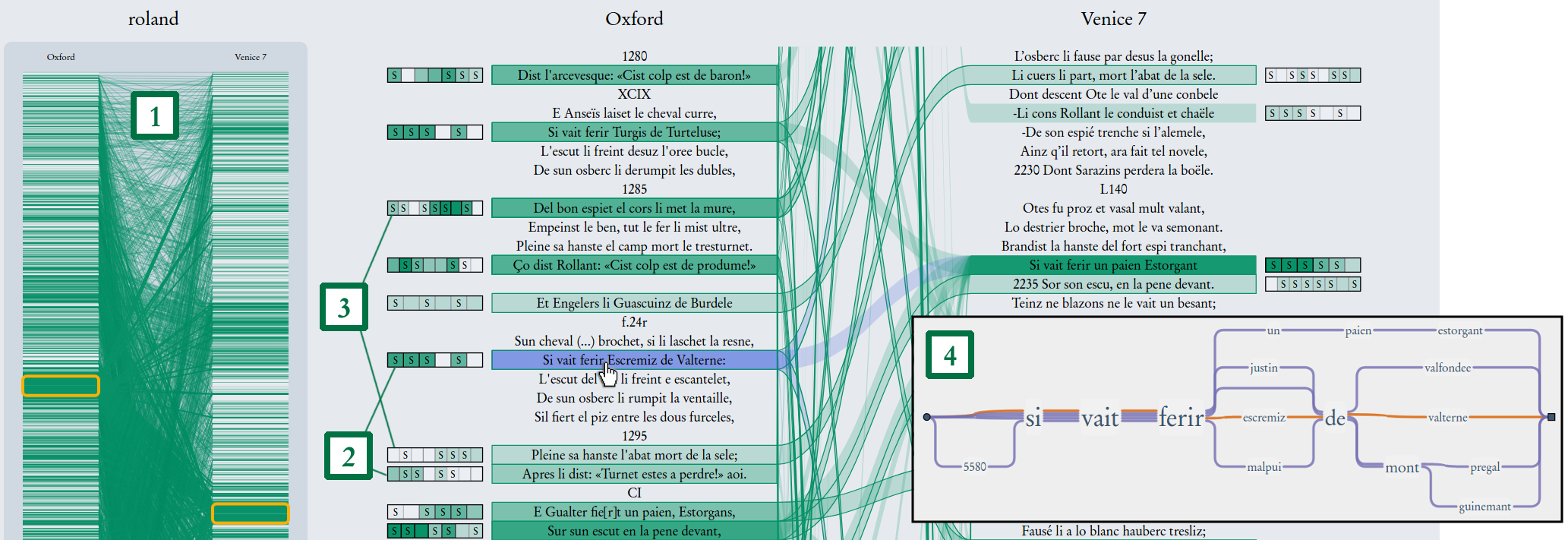

Abstract: Textual criticism consists of the identification and analysis of variant
readings among different versions of a text. Being a relatively simple
task for modern languages, the collation of medieval text traditions
ranges from the complex to the virtually impossible depending on
the degree of instability of textual transmission. We present a visual
analytics environment that supports computationally aligning such
complex textual differences typical of orally inflected medieval poetry.
For the purpose of analyzing alignment, we provide interactive
visualizations for different text hierarchy levels, specifically, a meso
reading view to support investigating repetition and variance at the
line level across text segments. In addition to outlining important
aspects of our interdisciplinary collaboration, we emphasize the utility
of the proposed system by various usage scenarios in medieval
French literature.
VAST paper (pre-print)

Juxtaposed La vie de saint Marie l’Egyptienne versions: (1) full-line matches annotated as true alignments, (2) requesting 4-grams removes false positive
alignment, (3) close reading of unrelated verse lines.

Juxtaposed Perceval versions: (1) distant reading shows a high similarity in the form of parallel lines and a few repetitions as diagonal lines, (2) meso reading
of the repetitive verse line “Qui me dist que li ange sont”, (3) close reading reveals false positive alignment, (4) numerous full-line matches.

Juxtaposed Chanson de Roland versions: (1) few parallel and numerous diagonal lines in the distant reading illustrate the instability of versions, (2) examples
of frontal half-line matches, (3) examples of posterior half-line matches, (4) close reading of verse lines containing the Duggan battle formula “si vait ferir”.